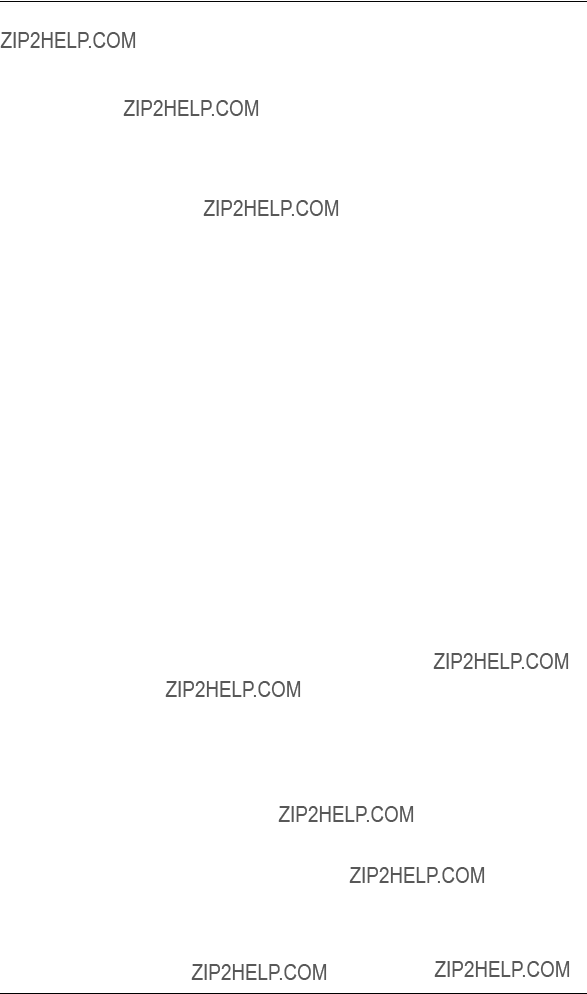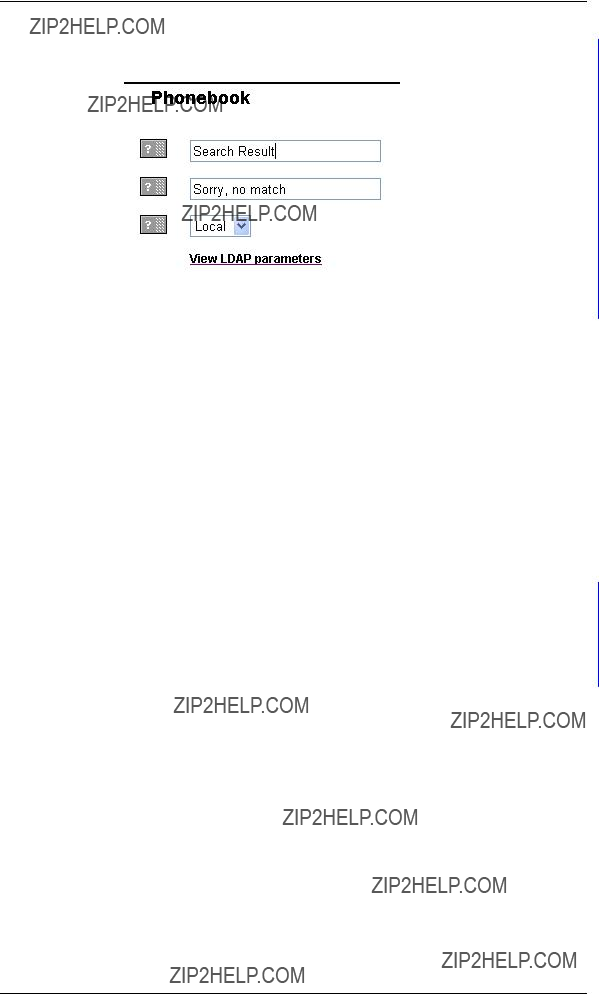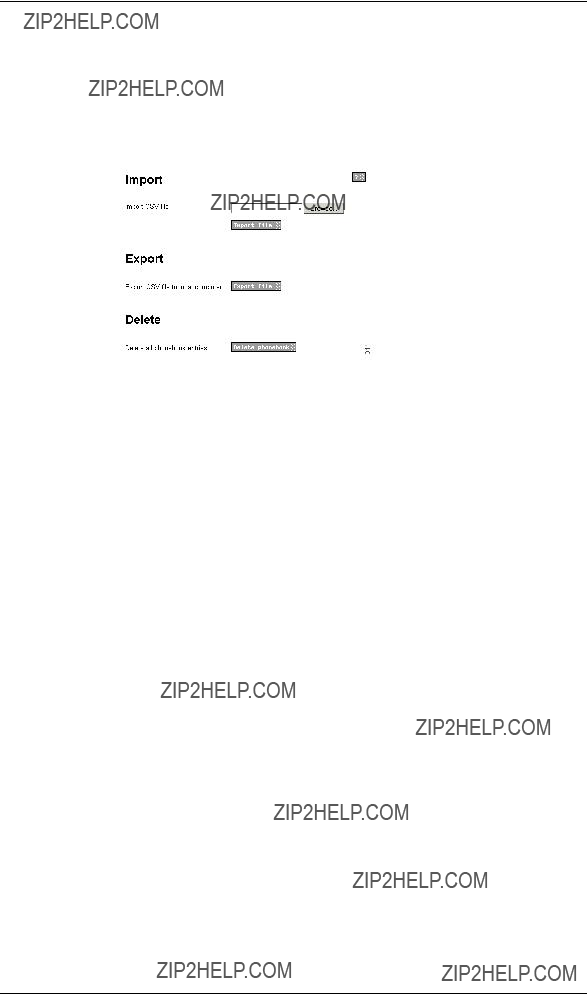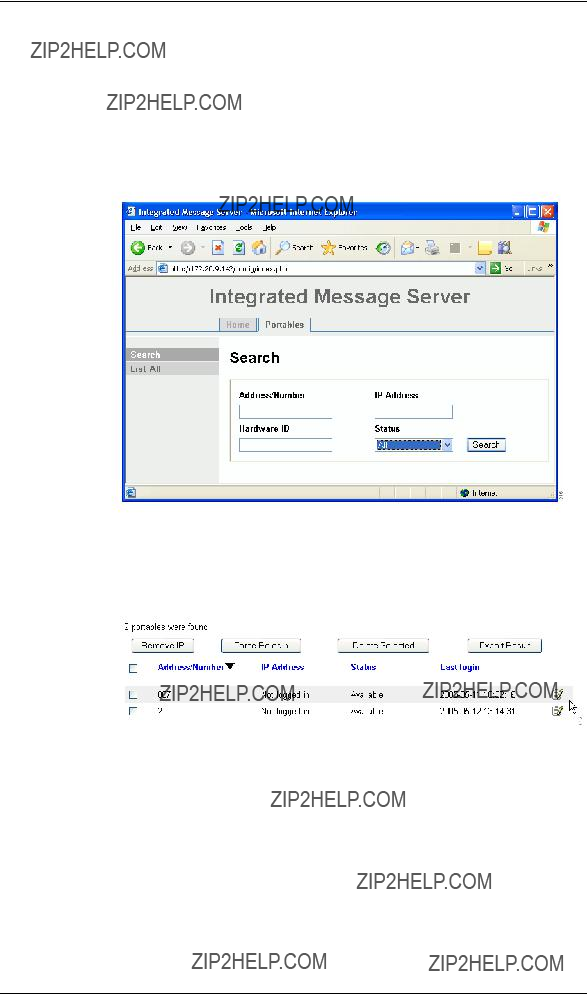
TD 92322GB
Installation and Operation Manual
Integrated Message Server,



1 Introduction
This document describes the installation and configuration of
The
Messaging
Unite System
Unite  modules
modules
LAN
access points
WiFi Handsets
VoIP Gateway/Gatekeeper
PRI
IMS/IP - WiFi
(Messaging Gateway)
Figure 1.
An application called Basic Alarm Manager is included in the
A phonebook that can be accessed from the VoWiFi handsets is also included in the
Phonebook Service is delivered along with the
Client applications can communicate with the

1.1Requirements
???Microsoft Internet Explorer 6.0??? or later
(only used for installation, administration and IMS/IP Messaging Tool)
Basic licence for IMS/IP
IMS for VoWiFi licence
Additional licences for IMS/IP
OAP licences:
???Basic messaging (acknowledge included)
???Basic messaging, interactive messaging, and user data
???Basic messaging and alarm
???Basic messaging, interactive messaging, user data, and alarm

J22
1
IC24
 J9
J9
BAT1SW3
6
J2
J16
5
1
J10 
013
Figure 2. Board description with components described in this chapter.
2.1Description of LED Indications
There are a number of LEDs on ELISE that indicate the status of the software, see figure 2. These status indications are software dependent and are described in this chapter. For information regarding indications by other LEDs, see the ELISE2 Installation Guide.
2.2Internal Inputs and Outputs
The IMS/IP has two internal inputs and two
See chapter 6 Basic Alarm Manager on page 11, for more information about the Basic Alarm Manager, and the ELISE2 Installation Guide for information about how to connect inputs and outputs.

2.3Function Indicator and Error Relay Output
Function indicator
 003
003
Figure 3. The function indicator that indicates the status of the IMS/IP
The function indicator and the error relay indicate the status of the IMS/IP. The indication is dependent of whether the IMS/IP is connected to the
IMS/IP connected to
IMS/IP connected to
For information about other LED indications, see Installation Guide, ELISE2, TD 92232GB.

2.4Addressing of the IMS/IP
If the IMS/IP is connected to an
2.5Licence
All IMS/IP units must have a valid licence. The licence is preprogrammed, and does not need to be entered at installation.
2.5.1Unlicensed Mode
When needed, the IMS/IP can be started in unlicensed mode. Unlicensed mode is indicated by the Function Indicator with an orange light (3000 ms ON/100 ms OFF). For details on the LED characteristics, see the ELISE Installation Guide.
The IMS/IP has full functionality in unlicensed mode for 2 hours. After that, it must be restarted, either physically from the unit or from the IMS/IP Administration web page.
How to set the IMS/IP in unlicensed mode is described in Installation Guide, ELISE2,

3 Configuration
This chapter covers the parameters that can be altered on the IMS/IP Administration pages. The address to the administration pages is xxx.xxx.xxx.xxx/admin.
There are two types of users for the IMS/IP administration pages:
???Technicians, first time set up commissioning (sysadmin) Full access right.
???Administrators (admin)
Limitation in troubleshooting (no access to view complete log).
3.1WLAN Interface
3.1.1Handset Registration
To be able to register to the IMS/IP, each VoWiFi handset must be programmed with the IP address of the IMS/IP used, refer to the Configuration Manual for respective VoWiFi handset.
3.1.2Shared Phones
When using shared phones it is recommended that all VoWiFi handsets authenticates with individual passwords. The IMS/IP can retrieve these passwords from a User Server. Another possibility is to use the handset??s call number as password.
If a User Server is used the operating mode for the UNS must be set to ???forwarding??? and the User Server (the ESS which has the users defined) must be specified as the forwarding destination. The ESS must also be identified as User Server as described in 3.3.3 User Server on page 10.
Note: Shared phones requires, besides the User Server (ESS), a PDM System version for management.
3.1.3Message Distribution
The WLAN Interface has distribution lists that define where incoming data from handsets, for example alarms and user data, should be sent. The following information is supported:
1. The MAC address is added as extended information in the original sender (USD). In for example the AMS, the MAC address is found as service address in the source address.

??? Availability Info
- Change of status of the VoWiFi handsets.
(The status can be changed from the IMS/IP GUI or from the VoWiFi handset).
When an alarm or user key data message is received from a PP, the PP MAC address shall be added as extended information in the original sender (USD) when the message is distributed on UNITE.
The addressing of the receivers is described in Installation Guide, ELISE2, TD 92232GB.
3.1.4Interface Groups
Interface Groups is used when one message should be sent to several VoWiFi handsets. The group handler has 30 groups with 15 handset addresses and one group with 50. The first group in the list is the large group.
The groups are defined in the administration pages. Each group is given an address, either a name or a number, and then the addresses of the handsets that should be included in the group are added.
Note: Only VoWiFi handsets can be included in the groups in the group handler. Messages will not be sent to any other types of Pocket Units.
Note: If it shall be possible to send messages from a VoWiFi handset or from the
3.1.5Handset Administration
Handset Administration gives the possibility to list all handsets that are registered in the system, search for a specific handset, or a range of handsets.
It is possible to customize the pages by changing the language and number of handsets shown on the search result list. See 8 Handset Administration on page 22.
3.1.6WLAN System
WLAN system handles the VoWiFi handset relogin time and authentication. Call diversion display text and Extended activity logging is also enabled in this view.
The time before a handset must relogin to the IMS/IP is set in minutes and when this time is exceeded the handset will be considered unreachable. This is the maximum time it takes for a handset to reconnect after installing a new IMS/IP, or updating an IMS/IP.
Note that a short relogin time implies a higher service/security but it also loads the system.
Text specified in the ???Call Diversion Display Text??? text field is, if enabled, added to the display text when a call diversion takes place. By entering the character ???%???, the original call ID will be included in the display text on the place where the character is entered. Note that all characters are not possible to display.
Enable Extended Activity Log for intermediate logs, for more information refer to the
Function Description, Activity Logging in Unite, TD 92341GB.
The very first time a VoWiFi handset logs in to the IMS/IP, it must authenticate itself to the IMS/IP with a password. The password is then stored in the handset for future authentication. The IMS/IP has three authentication alternatives; ???Common password???, ???User server??? and ???Number as password???.
A common password can be specified in the IMS/IP, and this password is then used for all VoWiFi handsets in the system. If the common password field is left empty, the handset must send an empty password for authentication.

If individual passwords is needed, for example for shared phones, passwords can either be specified in a User Server or the individual call numbers can be used, refer to 3.1.2 Shared Phones.
Forced login allows a user to login with a call number that already is in use. The handset that already is logged in will then be unregistered.
The function is only valid when the authentication method is set to ???Common password??? or to ???Number as password???.
3.1.7Messaging Tool
The title on the IMS/IP Messaging Tool web page can be changed.
3.1.8Phonebook
Included in the IMS/IP is the possibility to access and search for phone numbers in a phonebook, from a VoWiFi handset. The phone numbers can be searched for in a local database or in an LDAP server. Refer to chapter 7 IMS/IP Phonebook Configuration on page 15 for configuration instructions.
3.2900 Interface
This chapter handles settings for the connection to the System 900
3.2.1System 900 Interface
???Bus operating mode
-
-
-According to DIP switch: If the IMS/IP address DIP switch is set to 00, it is controlling the communication on the
-No
???Module Priority
This is the IMS/IP priority on the
???Number of message transmissions
This is how many times a paging is transmitted in the System 900. This parameter is only used when the IMS/IP is connected to an
???Configuration of parameters below
When the IMS/IP is connected to an
???Number of digits in call number
This is the number of digits in the pocket unit addresses in the system. If the IMS/IP is controlling the communication on the
???Prefix and call number range
This is the prefix that is used in the system. The prefix has to be the same as for the other modules in the system. If the IMS/IP is controlling the communication on the A-

bus, this parameter has to be set manually. See System Planning,
???Send module status from
The IMS/IP can send module status received from the
???Call diversion display text
Text specified here is added to the display message at a call diversion. The originating Call ID can be included by writing a ???%??? character where the Call ID shall be inserted in the text.
3.2.2Message Distribution
The 900 Interface has distribution lists that define where incoming data from the Pocket Units in the System 900 and the System 900 modules should be sent. The receivers are addressed in the same way as for the DECT Interface that is described in Installation Guide, ELISE2, TD 92232GB. The following information is supported:
???Alarm
-Personal alarms with location information from Pocket Units.
???Mobile Data
-Data sent from Pocket Units.
???Input activity
-An input on an Alarm Module has been activated.
???Location
-Special Location1 information from Pocket Units.
???Availability Info
-Includes absence information, i.e. if a Pocket Unit is placed in Charging/Storage Rack.
Pagings that are received from the
3.3Other Parameters
3.3.1Status log
The Status log messages have their own distribution list that can be reached from System Setup > Other > Logging > Status log. The status log messages include information about errors in applications or modules, for example module status from Fixed Units on the
3.3.2System Activity log
The System Activity log messages have their own distribution list that can be reached from System Setup > Other > Logging> System Activity log. For information of system activity log messages, see Function Description, Activity Logging in Unite, TD 92341GB. For information about how to address the receiver of the System Activity log messages, see
Installation and Operation Manual, Enhanced System Services, ESS, TD 92253GB.
1.The Special Location can be sent every time a pocket unit gets a new location from a locator in the system. This requires configuration both in the handset and in the locator. Also called ???Immediate Alarm Transmission???.

3.3.3User Server
IMS/IP can use an ESS as a user server for authentication of portables, see 3.1.6 WLAN System on page 7.
1Select System Setup > User Server on the IMS/IP administration page.
2Enter the IP address of the ESS which has users defined and click ???Activate???.
4 IMS/IP Connected to the
To be able to connect the System 900 modules to the VoWiFi System without using a Central Unit, the IMS/IP can control the communication on the System 900
5 Absence Handling
The IMS/IP keeps track of all handsets that have reported absence status. The handset can report unavailable if it is set in Manual Absent mode from the IMS/IP GUI, see 8.2 Change the Handset Absent Status on page 23, or from the Profiles menu in the Handset, see the User Manual for the handset.
When a message is sent to an absent handset, the sending module can get information from the IMS/IP that the handset is absent. Changes in the handset status, which include availability information, can also result in a message to modules in the distribution list, see
3.1.3 Message Distribution on page 6.
5.1Absence List
If a search is performed from the IMS/IP GUI (WLAN interface > Handset Administration) a list indicating the handsets status is presented. Different status criteria can be used in the search. Another possibility is to list all handsets and then sort in the search result list with desired status.

6 Basic Alarm Manager
A Basic Alarm Manager that can trigger on alarms and data sent from VoWiFi handsets are included in the IMS/IP. Activated inputs on the IMS/IP or a module on the
Input Activity
009
Figure 4. Communication flow for the Basic Alarm Manager and external systems.

6.1Nomenclature
6.2 Technical Specification
6.3Parameter Setup
When the IMS/IP is delivered, the 900 Interface is configured to send all Input Activity information to the Basic Alarm Manager. The interface is configured to send all Alarms and User Data from the handset to the Basic Alarm Manager. These settings can be changed when the IMS/IP parameters are restored from file, i.e. check that the settings are as described below.
Configuration of Input Activity
1Open the IMS/IP administration pages and click ???Message Distribution??? for the 900 Interface.
2Click ???Input Activity???, see figure 5.
Figure 5. Setting up the Message Distribution list for the 900 Interface to send information to the Basic Alarm Manager.
1.From this version the Alarm Module can be configured to send Input Activity information both when the input is opened and closed. Previous versions have no support for this.

3 Enter the address 127.0.0.1/BAM in one address field. Click the ???Activate??? button.
Configuration of Alarm and User Data
1Open the IMS/IP administration pages and click ???Message Distribution??? for the WLAN Interface.
2Click ???Alarm???, see figure 6.
Figure 6. Setting up the Message Distribution list for the WLAN Interface to send information to the Basic Alarm Manager.
3Enter the address 127.0.0.1/BAM in one address field. Click the ???Activate??? button.
4Click ???Message Distribution??? for the WLAN Interface.
5Click ???Mobile Data???.
6Enter the address 127.0.0.1/BAM in one address field. Click the ???Activate??? button.
6.4Configuration
The Basic Alarm Manager can be reached from the left menu in the IMS/IP administration pages and also from the direct link http://xxx.xxx.xxx.xxx/bam, where xxx.xxx.xxx.xxx is the IP address. The user that has access to these pages is called admin and the default password is changeme.
6.4.1Define Inputs and Outputs
Before an input or output can be used in the configuration, it has to be defined with a name and address.
IMS/IP inputs1
The IMS/IP has two inputs that can be used by the Basic Alarm Manager. These inputs are predefined in the Basic Alarm Manager at delivery. The states that can be detected are open and close.
Alarm Module inputs
The number of inputs that can be used in the Basic Alarm Manager can be extended by using an Alarm Module connected to the
1.The IMS/IP has two inputs. When the input is activated, it is called ???close??? in the Basic Alarm Manager. For more information about the inputs, see the ELISE Installation Guide.
2.Every module that is connected to the

IMS/IP outputs1
The IMS/IP has two outputs that can be used by the Basic Alarm Manager. These outputs are predefined in the Basic Alarm Manager at delivery. The initial state, i.e. high or low, for the output can also be set from the Basic Alarm Manager.
Output Module outputs
The number of outputs that can be used in the Basic Alarm Manager can be extended by using an Output Module connected to the
6.4.2Define an Event
An Event consists of one or several trigger conditions that leads to one or several actions. It is indicated in the left menu how many triggers and actions that has been configured. See also configuration examples in Appendix B.
Triggers
A trigger is a set of conditions that have to be fulfilled, for example that an input has to be open for a certain time period or that an alarm has been sent from a handset.
Several triggers can be defined for each Event. The actions in the Event will be carried out when any of the triggers is fulfilled.
Actions
The actions that can be carried out by the Basic Alarm Manager is to send a message to a Pocket Unit in the system or activate an output. The UNS will be used to get the destination address corresponding to the address entered in the ???Handset No.??? field. Several actions can be carried out for each event. The actions can be repeated at a regular time interval as long as an input is active.
6.5Backup and Restore
The Basic Alarm Manager can be backed up and restored from the Basic Alarm Manager user interface. The configuration of the Basic Alarm Manager will also be included in the backup that is created from the IMS/IP administration pages.
Note: When the IMS/IP is restored from the administration pages, the Basic Alarm Manager will also be restored, i.e. all changes that have been made since the last backup will be discarded.
It is also possible to clear the complete configuration from the Basic Alarm Manager user interface.
1.The IMS/IP has two outputs of

7 IMS/IP Phonebook Configuration
This chapter describes the configuration of the internal IMS/IP Phonebook. For information about installation and configuration of the Phonebook Service, see 10 Phonebook Service and Route2ELISE on page 25.
The internal IMS/IP Phonebook gives the possibility to search for phone numbers in a local database or in an LDAP server.
If the search is to be forwarded to an LDAP server, the LDAP parameters need to be configured as described in 7.5 LDAP Parameter Setup on page 19.
7.1Technical Specification
The local database has defined limitations while most of the limitations for the LDAP server depends on the LDAP server used, see table below.
Handsets that can access the phonebook:1 VoWiFi handsets in the VoWiFi system
7.2Phonebook address
The default Call ID in the UNS is 999999 for phonebook access.
When the UNS in the IMS/IP is set to forwarding mode, the phonebook Call ID must exist in the module that the requests are sent to. Any change of the Call ID and/or IP address must be made in that module. If the default address is used, no changes are needed.
When the UNS in the IMS/IP is set to
1 Open the IMS/IP administration pages and click UNS > Alias / Call ID. 2 Click ???999999??? in the list.
3 Enter the new Call ID for the phonebook, i.e. the Call ID the handsets are using to access the phonebook. Check that the Call ID does not conflict with any of the handsets in the system.
1.See also documentation for the handset.

7.3Phonebook Setup
Figure 7. IMS/IP Phonebook
7.3.1Enter Search result texts
When a request is sent to the phonebook, a text is included in the response that is sent to the handset. These texts can be customized, for example translated.
1Open the IMS/IP administration pages and click ???Phonebook???.
2Enter the texts that should be included in the search result, see table below for more information about the different texts and when they are used.
7.3.2Select Phonebook Database
Select which database to use for phone numbers; ???Local??? database, or ???LDAP??? server.
???If the default local database is selected, continue below in chapter 7.4 Local Phonebook Administration.
???If LDAP server is selected, continue in chapter 7.5 LDAP Parameter Setup on page 19.
7.4Local Phonebook Administration
The local phonebook database is administrated from a web browser. The administration can be reached from the page xxx.xxx.xxx.xxx/user, where xxx.xxx.xxx.xxx is the IMS/IP address. A special user with login name user has access to this page. It is also possible to change the password for this user from this page.

7.4.1Update the Local Database
The phonebook entries can be created from any CSV file and also from the web interface.
Import a CSV file
The CSV file can be created using Microsoft Excel or any leading spreadsheet or relational database, and should have the following format:
First name 1;Family name 1;Phone number 1
First name 2;Family name 2;Phone number 2
The CSV file is imported as described below.
1Open the page: http://xxx.xxx.xxx.xxx/user.
Log on with user. The default password is password.
2Click the Administrate IMS/IP Phonebook link.
3Click the ???Import/Export??? button.
The window shown in figure 8 will appear.
Figure 8. Importing a CSV file.
4 Click ???Browse??? to locate the CSV file in the file system. Click ???Import file???.
Update the local database from the web interface
1Open the page: http://xxx.xxx.xxx.xxx/user.
Log on with user. The default password is password.
2Click the Administrate IMS/IP Phonebook link The window shown in figure 9 will appear.
Figure 9. Web interface for updating the phonebook database.
3Click ???Add new entry???. Enter ???First name???, ???Family name???, and ???Number???. If the field is not filled in or if the entered value is not valid, the field is coloured yellow.
4When all entries have been added, click ???Save changes???.
5Click the ???Edit??? button to return to the window in figure 9.

7.4.2Export the Local Database
The phonebook database can be exported to a CSV file for editing and backup reasons.
1Open the page: http://xxx.xxx.xxx.xxx/user.
Log on with user. The default password is password.
2Click the Administrate IMS/IP Phonebook link.
The window shown in figure 10 will appear.
Figure 10. Exporting a CSV file.
3Click ???Export file???. Select ???Save this file to disk???. Enter a file name and the location where the file should be stored and click ???Save???.
7.4.3Delete the Local Database
1Open the page: http://xxx.xxx.xxx.xxx/user.
Log on with user. The default password is password.
2Click the Administrate IMS/IP Phonebook link.
The window shown in figure 10 will appear.
3Click ???Delete phonebook???. Click ???OK??? in the dialogue window that appears.

7.5LDAP Parameter Setup
The Lightweight Directory Access Protocol (LDAP) is an application protocol for querying and modifying directory services running over TCP/IP. The IMS/IP starts an LDAP session by connecting to an LDAP server. The IMS/IP then sends operation requests to the server, and the server sends responses in return.
An LDAP directory is a tree of directory entries and follows the structure below:
???An entry consists of a set of attributes.
???An attribute has a name and one or more values.
An entry can look like this:
dn: cn=John Ericson,dc=company,dc=com
cn: John Ericson
givenName: John
sn: Ericson
telephoneNumber: +1 888 555 6789
dn is the name of the entry; it is not an attribute nor part of the entry. ???cn=John Ericson??? is the entry's RDN, and ???dc=company, dc=com??? is the DN of the parent entry. The other lines show the attributes in the entry. Attribute names are typically mnemonic strings, like ???cn??? for common name, ???dc??? for domain component, ???mail??? for
1Click on the View LDAP parameters link.
2Enter the IP or DNS address to the LDAP server in the LDAP Server Address field.
3Enter the port number used by the LDAP server in the Port Number field.
4Select how to authenticate to the LDAP server in the Authentication Method drop down list.
Note: If the authentication method
5Enter the user name used for logging on to the LDAP server in the User name field.
6Enter the password used for logging on to the LDAP server in the Password field.
7Enter the user entries' parent DN in the Search Base DN field. (The distinguished name for all users common entry.)
8Enter the name of the attribute that holds the phone numbers in the Number attribute field.
9Select the appropriate option in the Type of Name Attribute(s) drop down list.
The option depends on if the name is stored in a single attribute or if it is splitted into two different attributes.
10Enter name(s) of the attribute(s) containing first name and family name in the Name Attribute(s) field. If two attributes are used, enter the first name on the first line and the family name on the second line.
11Enter an error message to be sent as an answer to a phonebook query that was unsuccessful in the Error message field.

7.6Examples of Settings
??? LDAP directory in VoIP Gateway
Figure 11. Settings for the LDAP directory in the VoIP Gateway
??? Active directory 2003
Figure 12. Settings for Active directory 2003
??? Cisco CallManager
Figure 13. Settings for Cisco CallManager

7.7Operation
The user accesses the phonebook by sending a message from the handset. The message includes a search query containing part of the first name and/or the family name, or phone number, see below.
By part of name means the first characters of the name and by part of number means the last digits of the number. If no message text is entered, the 25 first entries in the database will be returned.
1Enter the text and send it to the phonebook with the specified address (number).
The search result is sent back to the handset as an message. If more than one number that matches the query is found, the result is displayed as a list of names.
2Select a name and press the Call key to dial the number. See also the documentation for the handset that is used.
Search examples
You want to search for:
First name or Family name
First and Family name
First name only
Family name only
Telephone number
Text to be entered:
S M
2 0 0
Search result:
All names that start with Sm, both first names and family names.
All entries where the first name starts with L and the family name starts with B.
All first names that starts with An.
All family names that start with An.
All telephone numbers that end with 200.

8 Handset Administration
Handset Administration gives the possibility to list all handsets that are registered in the system, search for a specific handset or a range of handsets
8.1Search for Registered Handsets
1Open the IMS/IP administration pages and click ???Handset Administration??? for the WLAN Interface.
Figure 14. Handset Administration pages.
2Select ???List All??? or search with different criteria, for example the ???Address/Number???, the ???IP address???, the ???Hardware ID??? (often the MAC address) or the ???Status??? of the handset.
A result list is presented.
Figure 15. Search result list.
The search result can be sorted by address/number, IP address, status or last login.
8.1.1Save the Search Result list
The search result list can be exported to a comma separated file.
1Click the ???Export Result??? button.
2Select ???Save this file to disk???. Enter a file name and the location where the file should be stored, and click ???Save???.

8.1.2Remove IP Address, force a Relogin, or Delete a VoWiFi handset
1Check the handset(s) checkbox in the search result list, see figure 15 on page 22
2Click ???Remove IP Address???, ???Force Relogin??? or ???Delete Selected???.
??? Remove IP Address
Can be used to reset the address of an handset.
??? Force Relogin
Can be used to check the connection with a handset.
??? Delete Selected
Can be used to remove numbers not in use.
8.1.3Show Handset Details
Figure 16. Handset details.
8.2Change the Handset Absent Status
It is possible to change the Manual Absent status on the Handset administration pages.
1 Search for the handset, see 8.1 Search for Registered Handsets on page 22. 2 Click on the icon to view handset details.
icon to view handset details.
3 Select on/off in the Manual Absent

9 Messaging tool
A
Figure 17. The IMS/IP messaging tool
Enter the call number of a Pocket Unit or the address of a group (1). Enter the message text that should be sent to the handset (2). Click the ???Send??? button (3).
A
Figure 18. Message sent and not sent.
If the message has not been sent, try to send the message again. Possible errors are:
???No address
???Licence error

10 Phonebook Service and Route2ELISE
A CD with Phonebook Service and Route2ELISE is included in the IMS/IP delivery.
For more information about the Phonebook Service and how to install it, see documentation included on the CD and also Installation and Operation Manual, Phonebook Service.
Route2ELISE is used during the installation. See Installation Guide, ELISE for more information.
11 Open Access Protocol
The IMS/IP has a server that client applications can use to communicate with the systems that the IMS/IP is connected to, for example the VoWiFi System or System 900. The protocol that is used for communication is called Open Access Protocol (OAP), and therefore the server is called OAP Server.
See Function Description, Open Access Protocol, TD 92215GB for more information about the protocol and when it can be used.
11.1Configuration
The Message Distribution lists for the different interfaces have to be configured to send the information to the OAP Server, in order to give the client access to the information. The address of the OAP Server is xxx.xxx.xxx.xxx/OAP.
Configuration Example
The Interface should be configured to send User Data to the OAP Server.
1Open the IMS/IP administration pages and click ???Message Distribution??? for the Interface.
2Click ???Mobile Data???, see figure 19.
Figure 19. Setting up the Message Distribution list for the Interface to send information to the OAP Server.
3Enter the address 127.0.0.1/OAP in one of the address fields. Click the ???Activate??? button.

12 Related Documents

Document History
For details in the latest version, see change bars in the document.

Appendix A: IMS/IP and Firewalls
If an application or unit has to communicate through a firewall with the IMS/IP, communication has to be permitted on the ports that are used. The following applies:

Appendix B: Basic Alarm Manager Configuration Examples
System Components
1Alarm Module, 1 inputs has been defined in the Basic Alarm Manager. Input names:
1Output Module, 2 outputs have been defined in the Basic Alarm Manager. Output names: Lamp
4Handsets with
The addresses of the handsets are included in the UNS number plan.
Example 1
A
Two events are created. One that handles the
The duration is not defined which means that the siren will sound until another action is started.
Alarm cancellation
Data from Handset Trigger
It doesn???t matter which handset that sends the data so the trigger is general when it comes to handset number.

The output is set to the initial state again.
Example 2
When the door to one of the
When the door has been open for 2 minutes (120 seconds), the action is started. The action should not be repeated so the ???Repetition time??? is not stated, and then the value in the ???Max. No. of Repetitions??? field has no meaning.
The duration is not defined which means that the lamp will be lit until another action is started.
When the door has been open for 10 minutes (600 seconds), another message should be sent.

When the door has been open for 30 minutes (1800 seconds), the message is sent to all handsets and the siren starts to sound.
The duration is not defined which means that the siren will sound until another action is started.
The outputs are set to the initial state again.